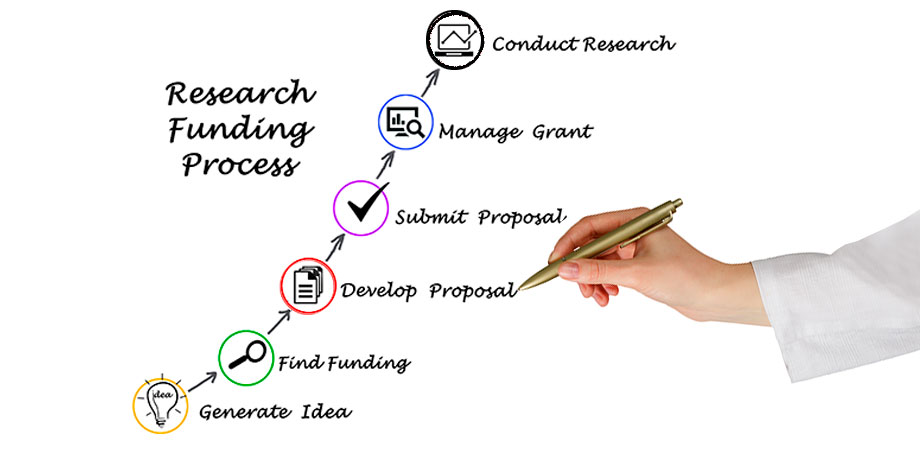How to Construct a Compelling Grant Proposal

Grant reviewers look for answers to six questions when appraising a proposal:
a) What is the problem the team wants to solve?
b) Why is that problem critical to the funding agency's mission?
c) What solution does the team propose?
d) What is the team's plan to implement or test its proposed solution?
e) Why is the team qualified to implement its plan?
f) How can the funding agency contribute to the project's success?
The most common mistake researchers make is spending too much time answering questions c and f but not enough time answering questions b and d. To ensure that a proposal completely answers those six questions, follow this ten-step process:
1) Highlight critical elements within the funding agency's request for proposal (RFP). Identify everything in the RFP that is a priority for this specific funding opportunity. Some project requirements are expressed directly, but some must be inferred. For example, the agency may mention the importance of undergraduate participation but not mention it in the list of proposal requirements.
2) Turn every highlighted element into a question. To ensure that your project completely aligns with the funding agency's interests, create a questionnaire that addresses every highlighted point in the RFP. To extend the previous example, your list should include a question like "How will this project incorporate undergraduate participation?"
3) Develop a project proposal that answers every question. Use the questions as prompts to articulate your proposed project. Write thorough answers to every question. The more detailed you are now, the easier it will be to assemble the proposal later.
4) Call the funding agency if possible. Most RFPs include contact information for the topic author or expert. It is best to call, rather than email—a personal conversation is more efficient and establishes rapport. Explain your proposed solution and how it addresses the problem, then ask whether the project is, in proposal jargon, "responsive to the RFP." Listen more than you talk. These conversations often reveal unwritten priorities that you should address and which will give you an advantage over other applicants.
5) Create a project plan and schedule. Create a week-by-week (or minimum month-by-month) schedule for the project. Some agencies—especially Department of Defense and NASA—expect an enumerated work breakdown structure and an annotated schedule, and some expect only an outline. Regardless of what the agency requires, the process of creating a clear schedule is an essential tool for good project management.
6) Establish a budget and cost justifications. Every RFP has different rules for format, content, cost considerations, etc. As a researcher, the important thing is that you review your project plan and articulate what you need, in what time frame, and why. Too often applicants delay creating the budget until last, only to discover that the scope of the project is larger than the budget.
7) Copy every answer from step 3 into the corresponding section of the proposal. Find a home for everything to ensure that nothing critical gets lost. Some answers may fit in more than one section, which is fine. Thoughtful repetition will reinforce information.
8) Make the proposal easy to skim. Create a sequence of figures that provide a high-level visual explanation of the project. For every figure, write a caption that states the conclusion the reviewer should make. Use bullets, tables, italics, and bold fonts to draw attention to important information.
9) Fill in gaps and smooth transitions. The reward for following all of the previous steps is that, in principle, the proposal, though disjointed, is now a complete and thorough rough draft. What follows is a very careful rewrite to improve clarity. Technical writing is a skill that only comes from practice, but books such as Michael Alley's The Craft of Scientific Writing can train you to write better, faster.
10) Proofread. Grammar, spelling, and punctuation errors are distracting, and the last thing you want is a distracted reviewer. Ask someone not involved in the project to read the proposal.
Following the above process guarantees that a grant proposal will be clear, complete, and well-structured. Reviewers will quickly find answers to evaluation criteria, thus reducing the chance that something important will be overlooked. Most important, this method puts central emphasis on why the project is important to the funding agency.
Nothing guarantees a proposal's success, but high-quality proposals always rise to the top.
Damon Diehl, PhD, is the Technology Program Manager at Luminate, the first optics-only startup incubator in the world. In addition to his grant-writing workshop, he also teaches the SPIE professional development class "The Very Least You Need to Know about Optics."
| Enjoy this article? Get similar news in your inbox |
|



